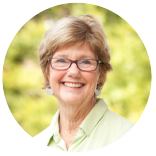 As our organization celebrates 90 years of serving this community and growing up alongside Austin, I’ve been reflecting on what brought me to this area in the 1970s – and it’s striking to realize that the mix of optimism and creativity that drew me here all those years ago is still what fuels my work in social justice to this day.
As our organization celebrates 90 years of serving this community and growing up alongside Austin, I’ve been reflecting on what brought me to this area in the 1970s – and it’s striking to realize that the mix of optimism and creativity that drew me here all those years ago is still what fuels my work in social justice to this day.
While I had visited Austin all throughout my childhood (and skied over snakes every summer in Ink’s Lake), by young adulthood, I was traveling around the west coast in a minivan, drawn to the next great artistic adventure.
I went to California to live in a redwood forest and restore trees to an area that had been devastated by a sawmill. I moved to New Mexico to live in an adobe house and run a 2,000 acres farm for a stunt man. When I came back to Texas, it was for the soil and the trees – I bought 50 acres of land in Bastrop that I still live on today and started an organic farm.
Austin had the perfect combination for me: I could live in the country (which feeds my soul) and I could be near artists at the same time. More than anything, Austin had and still has this aggressive optimism that says “you can do anything – make it happen.”
Austin has this aggressive optimism that says “you can do anything – make it happen.”
So I did: I grew organic vegetables and sold them to what is now Whole Foods and I raised goats to make goat cheese and became the Goat Lady. I also visited Armadillo World Headquarters in its hey day and met the love of my life, who at the time was a neon artist and made many of the signs you see around Austin, including the Hut’s Hamburgers sign.
This community has changed a lot since those days, but the things I really love about this place have stayed the same:
- Nature: Between Pedernales, McKinney Falls and the lakes, we’re surrounded by water. We also have rich soil and beautiful oak and pecan trees.
- Inclusion: You can be in any venue and see cowboys, bikers, entrepreneurs and artists all accepting of one another and sharing space.
- Migration: We live in a migration route for birds, which means we see a lot of different kinds of birds, but Austin is also a migration route for people, which means we see a tremendous amount of different cultures, and that makes us all richer.
- Creativity: I came to Austin to be near friends who were artists, and to this day, it still makes me smile to hear music out of my office window (a regular occurrence) and see people with tattoos (wearing art on their skin). It’s the same force that’s behind the boom of food trailers, where people can share their artistic expression through food, and why a local retailer just saved Toy Joy. We’re committed to our culture.
- Energy: More than anything, Austin is a community that’s aggressively optimistic, almost foolhardy. It’s this reckless passion that’s led to so many homegrown businesses, to so much risk and success and to so much that’s so different from anywhere else.
Unexpectedly, this energy is what drove me into social justice work: seeing so many different folks mingling together and respecting one another reinforced my belief that we are all stronger when we work together. When I founded the Family Crisis Center in Bastrop, the backbone of my efforts was this idea of bringing all the different stakeholders to the same table.
I think when businesses and creatives come together and learn to speak the same language, magic happens.
Today, I stay in my role as President of UWATX because of that same belief in collective impact, which is really what United Way is all about. I think when businesses and creatives (or experts and philanthropists or social workers and decision makers) come together and learn to speak the same language, we are all forced to think differently and confront new ideas and that’s where magic happens.
But the energy that drives us towards greater success also fuels my work because it worries me: as we continue to grow and change so quickly, I worry that we are moving away from one another and that divides are growing. As I see it, our challenge as a community is how to grow while still being Austin – how to become bigger and better while still embracing and caring for one another as we did when I first came here.
Luckily, the tools that got us here can pull us through. Finding a way to grow bigger while also growing close is just another challenge that we can take on with our patented brand of aggressive optimism – and that’s what drives me to keep doing my work every day, for another 90 years or until the work is done.
[hr]
Feature photo from j neuberger via Flickr Creative Commons.
